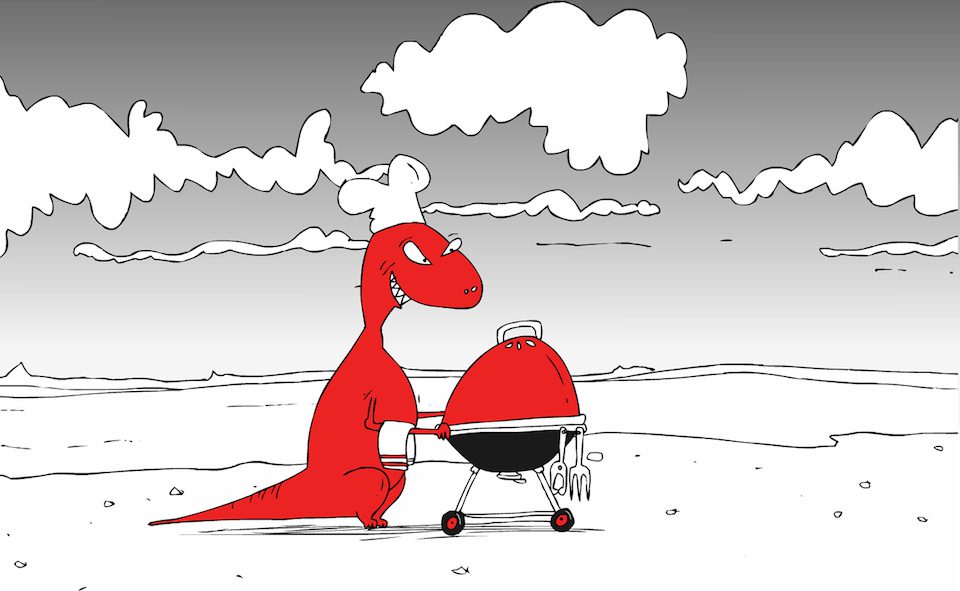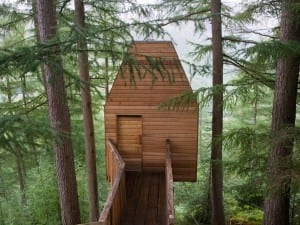In this two-part guide, the award winning, BAFTA nominated Brothers McLeod (Greg and Myles), offer a series of practical hints and tips to help you start animating.
So you want to make an animation. Really? Are you mad? It takes ages. Plus all the work has gone abroad. It’s not a proper job anyway. Immediately stop reading this and whip yourself with birch twigs until you feel very, very sorry. Still reading? Good. Forget the naysayers, we’re only here once, so let’s do something creative. In part one of this flirtation with animation I’m going to look at getting started in animation with a focus on generating ideas. Animation is one of the most rewarding art forms, creating interplay between the skills and creativity of a visual artist and the precision and dynamics of a filmmaker; it is the best of both worlds. The aim of this two-part series is to give you practical hints and tips to begin creating from the very early stages in part one to the actual creation and mechanics in part two. And who am I? Well, I’m one half of animation team The Brothers McLeod – we write, direct, animate, create music and even do silly voiceovers.
1 Why Animation?
The first question has to be, why animation? Why do you want to make an animation as opposed to a film, play, book, comic or indeed an obelisk? When we started out, we were offered some sage advice by the now sadly departed script editor, Jim Campbell. We’d sent him some animated comedy sketches, and he pointed out that quite a few of them could be filmed in live action quite inexpensively. It was a good point. Animation takes time. Since you’re going to the lengths of drawing everything that exists in your film’s world you may as well take advantage of it. Don’t just have talking heads. Fire your characters into outer space, chop off their arms only to have them grow back and give them a house as big as the moon. Go on.
2 Ideas for Sale
Douglas Adams, author of the Hitchhikers Guide to the Galaxy was often asked, “Where do you get your ideas from?” Apparently his usual answer was “A small mail-order company in Indiana.” Sadly he never divulged the name of the company and so we must look elsewhere. Read, watch films and TV, go for walks in the country, drive in the car without having music on, chat with friends, use stumbleupon.com. Expose yourself to as much as possible, then see what pops into your head. That’s really all there is to it. No, really.
3 The Ideas Room
So you have some ideas. Is it time to start animating yet? No. This is the classic mistake we all make. You have an idea. You want to see it ASAP, so you get on and make it and then sit there wondering why it doesn’t work. Whoa there! First of all take your idea into the Ideas Room. Anything is allowed here. Take your idea and think of all the possibilities. It helps to have someone else to bounce ideas around with (like a brother, for example). Do not hold back. Do not criticise. That comes later. If you are worried something is a stupid suggestion you’ll soon worry that all your ideas are stupid and then you’ll stop suggesting anything and stop having ideas. You’ll end up whipping yourself with birch twigs again.
4 Drawings
This is an article about animation and not just about coming up with ideas so you’ll need to buy some pencils and crayons too. Last year my brother Greg and I developed an idea for a half hour animated comedy. We sat opposite each other for three days and made each other laugh. I wrote down names, ideas for stories, character profiles, details about locations while Greg doodled and doodled and doodled some more until we had a large pile of illustrations. Greg is always sketching and drawing. Often when we’re looking for a character for one of our films we’ll dig out his sketchbooks and leaf through looking for someone in amongst the pages. We always find a character that’s just right. They’ve just been waiting patiently for us to find them.
5 Skip to the End
You don’t need a script. And storyboarding is a big yawn. Just skip to the animation. It’ll be fine. Maybe. Probably not. Actually if you’re creating something experimental or stream-of-consciousness then it might be fun to see what you come up with by just launching into animating. That can work. Sometimes if the story is really short, like a clip for YouTube, then you might be fine too. Both our 15 second Homer’s Odyssey and our viral short Spamland were made in a day. We had the idea, made a rough plan, Greg drew the characters and backgrounds, we recorded voices and then animated the films. Spamland had over 700,000 views. So it can work.
6 Script and Storyboard
However, if you’re creating a narrative, then script and storyboard are essential. You don’t want to start animating and then think, hang on, this short film doesn’t make any sense and I’ve basically wasted the last month of my life. You’ll be back on the birch again. Write a script or find a writer to work with. Use storyboards to visualise what you’ll see on screen as the story unfolds. This is where ideas and technique start to come together. Remember those films you watched that helped inspire you, go back and watch them again, but this time look at the shots, the framing, the type of images they’ve used and in what order.
7 Reverse Script and Storyboard
The heading for point seven doesn’t mean do everything in point six backwards. Sometimes it can really help to understand how a scene in film or TV show works by reverse writing or storyboarding it. In other words, you write the script by watching the DVD and pausing it. Or you draw your storyboard in the same way. You end up with a script and/or storyboard that must be similar to the ones the filmmakers used to create the finished piece. You can learn a lot by doing this and will soon realise how much effort has been put into really good scenes.
8 Are you being you?
When we started out we tried to get our animations seen on platforms like Atomfilms.com. We started creating animations that leant toward the “sick humour” market, which has a large following online (probably something to do with the detrimental effect of testosterone on teenage boys). We started to wonder why our own creations weren’t making us laugh anymore. It was because we were trying to create something that fitted in with what was popular, rather than with what naturally came out of our heads. Do something that you love. Someone else will love it too.
9 The Magic Drawer of Wonderment
So you’ve had the idea, worked on it, drawn pictures and written scripts and you’re ready to start animating except that you have a nagging suspicion that the whole project is about as wonderful as a packet of tuna bake mix. Don’t get the shredder out. But don’t push through the pain barrier either. Put the idea in a drawer and leave it well alone. There are lots of other ideas in your head. Go and explore them for a few days. Then, when the time is right, open that drawer and find out if you have a limp turkey or a golden egg, or possibly, a limp turkey with a golden egg hiding somewhere inside it.
10 The Animator God
Finally. You have all the ingredients to actually start making your film. As an animator you are the ultimate control freak. You get to design the way people look, decide how they think, behave and move. You decide what they say, and may even be the person saying it (in a funny voice). You choose where the camera is positioned to get the best shots. If you want you can work on it alone; just you making your own little world come alive. Let’s face it, you even get to decide how physics works. It doesn’t get much better than that.
In the next instalment of this animation guide, we will be looking at the processes required to get your ideas moving. Offering you the chance to actually start animating, and with the opportunities available for animators and filmmakers at Aesthetica, it has never been a better time to get started, so stop procrastinating and get going. For further information on The Brothers McLeod and to see clips of their animations Pedro and Frankensheep for the BBC or Art Sparks for the Tate visit www.bromc.co.uk.





